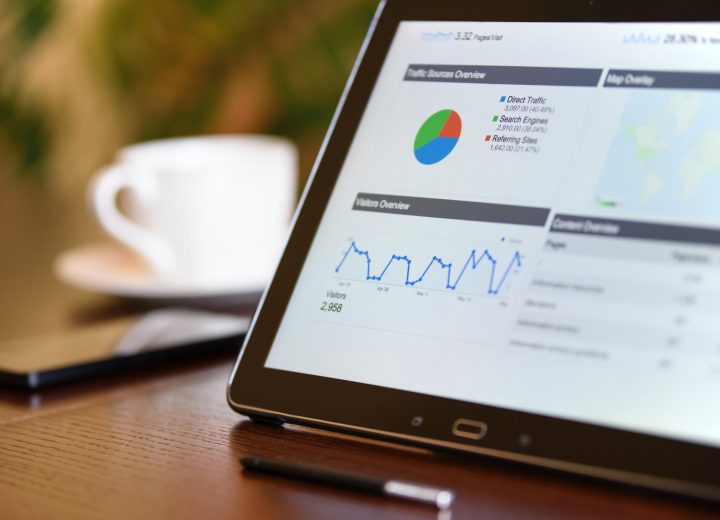Why Digital PR is Essential to Effective SEO
At one time PR and SEO were seen as two separate disciplines. However, digital marketers now realise that one of the top-ranking factors of SEO is links from high-quality, high domain authority websites like media sites and blogs – and digital PR can help you gain coverage and backlinks on these sites.
Building relationships with key journalists and influencers, and achieving brand mentions online and backlinks to your site, will help boost your online presence and position you as an expert in your field.
Backlink building
At one time it was thought that the best way to boost SEO was to get as many backlinks as possible, but Google’s algorithms have become a lot more sophisticated over the years and now the emphasis is on quality rather than quantity. According to Google, the best links come from high-trust, high-authority sites in a natural, editorial-style context.
This last point is important as essentially, backlinks should come from topically relevant websites and not have been paid for. Getting featured in Wired for example would be huge for a tech startup’s PR and a backlink to its website could take its SEO to the next level – not to mention the surge in referral traffic it could generate.
So how do you acquire these kinds of backlinks? By using tried and tested techniques PR you can build topically relevant links from the most prominent media outlets or blogs in your industry.
Building relationships with bloggers or journalists working for the media outlets you want to target will ensure that they come to you first if they need a comment or a case study for a story they’re working on.
Making friends with journalists
An effective way of doing this is to follow relevant journalists and bloggers on Twitter, discover what they are interested in and comment on or share their posts. Following the hashtags #JournoRequest or #PRRequest, which journalists use to look for sources, can give you a competitive advantage.
You can also pitch your own story ideas if you have something relevant, interesting, and newsworthy to talk about via direct message.
Most trade and consumer magazines also have forward features lists which set out the topics they intend to write about over the course of a year. If you have something relevant to contribute, like a real-life case study or an in-house expert who can talk knowledgeably on particular topic, it’s worth putting yourself forward. Forward features lists are usually available via the publication’s website in the advertising/media pack section (even though you don’t usually have to pay to be included in features) or you can contact the editorial team.
The art of ‘newsjacking’
Another useful tool in the PR arsenal is ‘newsjacking’. According to David Meerman Scott, author of Newsjacking, “Newsjacking [is] the process by which you inject your ideas or angles into breaking news, in real time, in order to generate media coverage for yourself of your business.”
Timing is everything when it comes to newsjacking as you need to seize the opportunity and pitch yourself as an expert speaker shortly after the story breaks and before it quickly becomes old news. For instance, if the Chancellor of the Exchequer makes a Budget statement and he’s included some measures to help first-time buyers, and you are a residential property expert, you could pitch yourself to journalists at your local newspaper, radio or TV station who maybe looking for expert interviewees. However, you would need to be pitching yourself shortly after the announcement as opposed to a couple of hours later when someone else it likely to have beaten you to it.
Domain authority ranking
To ensure your efforts are being concentrated in the right places you can check a website’s domain authority or even your own using free tools like Moz. Domain authority ranges from a score of 1 to 100. The higher your score, the better your website will rank on search engines like Google.
To calculate websites’ domain authority, Moz takes into account over 40 factors, like root domains and total number of inbound links. Websites with a large number of high-quality inbound links, like The Guardian for example, have the highest domain authority. New websites with few or no inbound links typically have a domain authority of one.
To increase the ranking of your own website another important tool you can use is content marketing. Part of Google’s search algorithm ranks your content based on engagement metrics, like total traffic, organic traffic, direct traffic through Chrome, time on site, bounce rate, brand mentions on authoritative sites, and return visits. To boost your website’s engagement and, in turn, domain authority, there’s really only way to do it — you must attract and engage a loyal audience by creating high-quality content. Compelling content will also attract the most organic backlinks from other websites in your industry.
Keyword planning
To combine PR with SEO effectively, you’ll also need to have a finite number of keywords to target. You can use variations of these keywords in a variety of settings such as on your website pages, in news releases, in guest posts on industry publications and on social media. Google even has a tool (Keyword Planner) to help you determine the best keywords to use. However, be sure to avoid keyword stuffing as Google’s algorithm will punish you for that.
Since it first became a profession, PR has always been concerned with building relationships with journalists and encouraging them to write about your product, service or business. Even though these days people talk about ‘digital PR’ the basic premise is exactly the same – only the channels or the ‘mediums’ through which the message is sent have changed. The crafting of the message is still just as important, and this is where a professional PR person or agency can arguably add the most value as they are experts at writing killer content, and always have been.
KS










